
Flexibility — and familiarity — in financing ensure one church’s buy/renovate/build expansion project is a smooth operation
By RaeAnn Slaybaugh
Recently, Northridge Church in Rochester, NY, found itself in a unique position. To accommodate growth, it would need to buy, renovate and build.
It was a different project than the church’s 2008 sanctuary build-out — and one that would require a different, far more flexible funding structure.
Fortunately, a familiar face on the lending side and a church lender with more than 115 years of experience made the process a lot simpler.
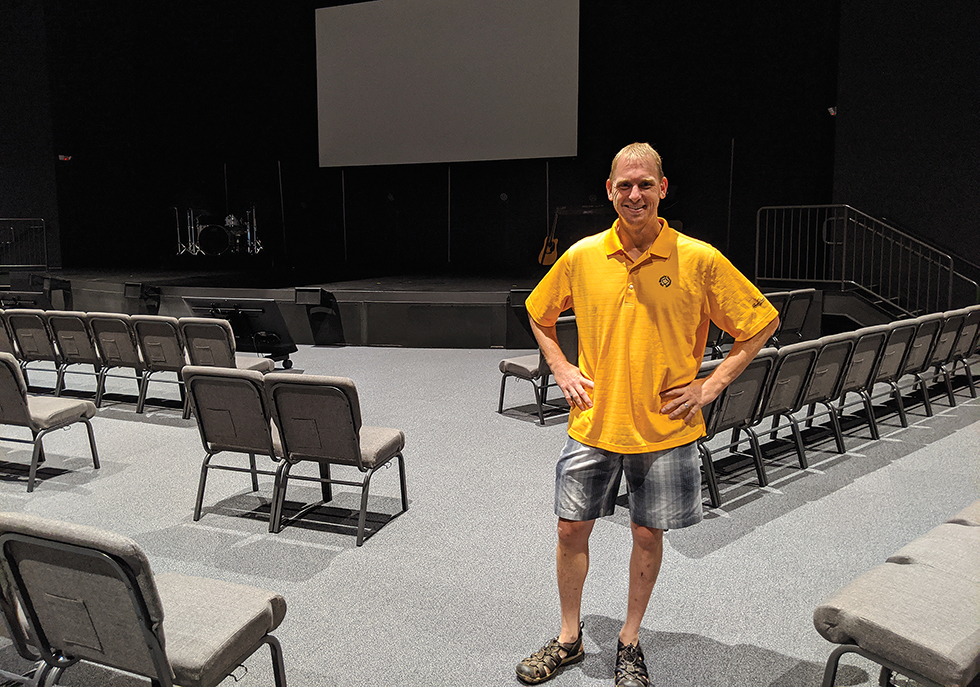
In fall 2019, Executive Pastor Scott Bixby and Business Administrator Jeff Mapes of Northridge Church in Rochester, NY, oversaw the purchase of a 75,000-square-foot building in nearby Webster. About two-thirds of the space was (and is) occupied by tenants; the rest was renovated for church use. Another 8,500 square feet of built space now houses an auditorium. Altogether, the project spans 35,000 square feet.
They certainly needed the room. One of the church’s campuses previously met in a school on a week-to-week basis. Although the surrounding community was a great fit for Northridge, the school wasn’t available about 20 percent of the time, forcing church leaders to shift to another school building in the district for worship.
So, the need for a more permanent physical presence in the area was clear. What wasn’t so defined — beyond some ballpark figures — was how much the new project would cost, or even how long it would take to complete.
Accordingly, Bixby and Mapes had a lot of questions when it came to financing: How do we do this? Do we combine it? Do we split it?
The answer, in a word, was flexibility. And in another word? Familiarity.
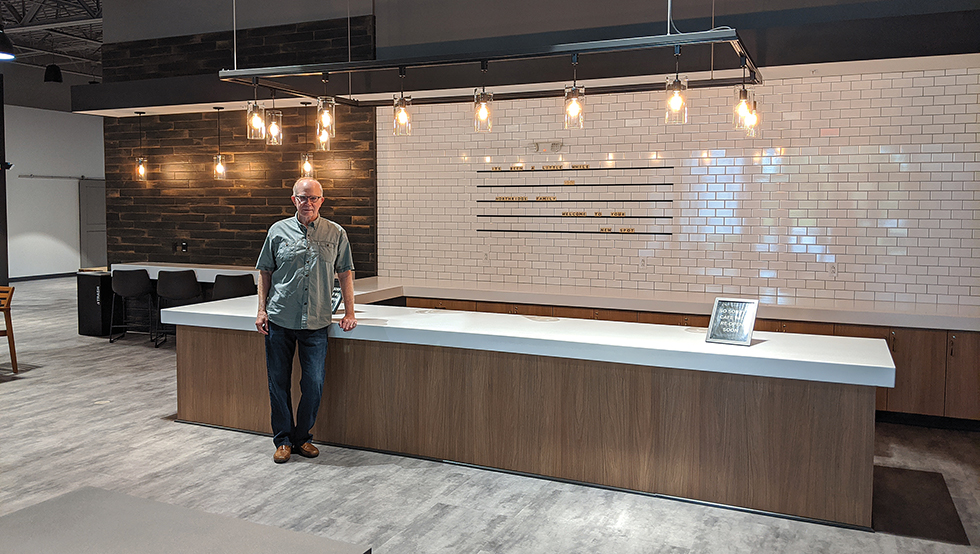
“Two birds, one stone”
As mentioned, this wasn’t the men’s first church construction project. They had a great first-project experience with their 2008 sanctuary build-out. Bixby and Mapes learned a lot about the funding process and made some excellent contacts.
As such, they knew to call Chris Lewis — the same person they’d worked with nearly a decade before.
Lewis’ foray into church lending began more than 15 years ago, when he chaired the finance committee for a capital campaign at his church, as his commercial lending background made him a great fit for that role. He was introduced to a church capital campaign firm, which led him to working for a church lender.
Lewis recalls, “I wasn’t even aware there was a church loan market.
“It really is a different vibe when you start working with a church lender like Thrivent Church Financing versus a commercial bank. They’re aware of ministry. They’ve got the same goals and end game that we do.” — Jeff Mape
As a missionary kid, it was really eye-opening.”
Northridge was one of his first church loan clients.
Bixby and Mapes recalled Lewis positively, because he walked them through all the loan details, called frequently with updates, and was very personable. In fact, they consider him a friend.
It made sense, then, for Mapes and Bixby to loop in Lewis for their church’s 2019 project. But due diligence matters, so they also made sure to ask leaders from other churches — who’d overseen similar projects — for their lending recommendations. One Pennsylvania church singled out Thrivent Church Financing.
When Mapes reached out to Lewis, he learned that he was working for Thrivent Church Financing!
“So, we got Thrivent and Chris,” they said. “Two birds, one stone.”
Why Thrivent Church Financing?
Thrivent has a long history of lending to churches and a common desire in seeing churches grow. Thrivent Church Financing offers compelling rates and terms, specializing in the refinancing of existing loans as well as construction loans. As Lewis points out, “We are helping many churches refinance their loans that often times free up funds for key ministries. We also offer creative financing solutions for new and hybrid projects like Northridge.”
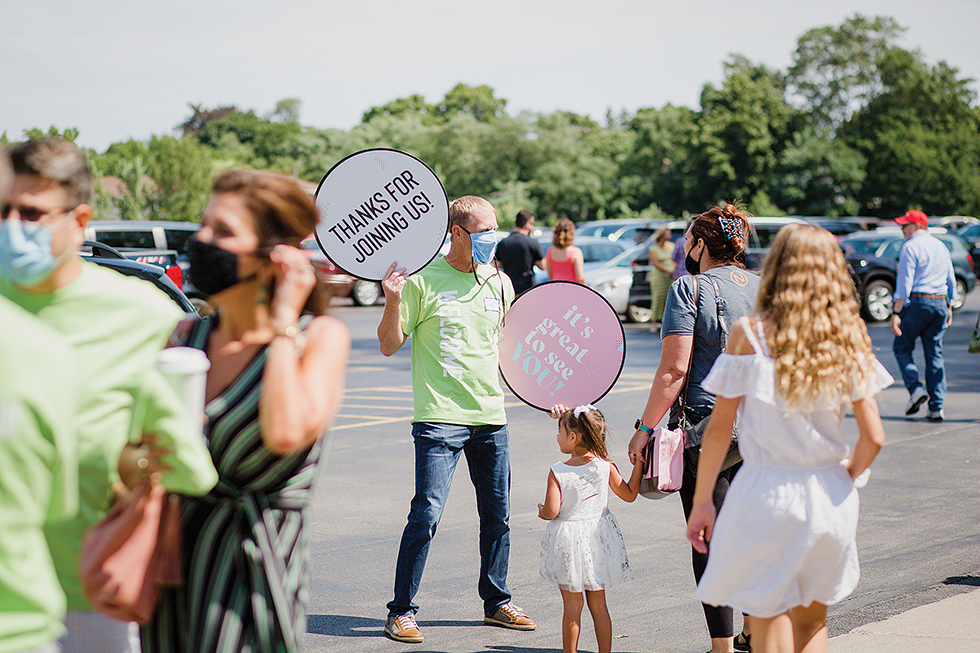
The value of a church-specific lender emerges
Throughout the lending process, Bixby and Mapes learned a lot about the differences between traditional lenders and church lenders. They discovered that many commercial banks were less willing to lend to a church.
“That surprised me, both back in 2008 and with our recent project,” Mapes says. “For them, I think churches are perceived as a risky proposition.
Bixby agrees and says: “Maybe it’s even more common here in the Northeast. There just aren’t that many booming churches up here.”
It turns out there’s some validity to what Mapes and Bixby experienced with commercial lenders.
“While some traditional commercial banks work with churches and do a great job, it’s usually because they have someone within the commercial division who understands how churches operate, generate revenue, manage expenses and so on,” he says. “But a lot of commercial banks don’t understand the benchmarks churches need to meet to borrow funds. We’ve seen cases where churches were overleveraged. The lender helped them out, but overextended them.”
When lending to a church, it’s critical that a lender understand how that church will service its debt. For commercial banks, church giving and donations often don’t suffice because they don’t represent tangible transactions.
“From their perspective, it’s like, hold on — if there were a meltdown, your church can’t force people to do anything, right?” he explains. “There’s a risk, obviously, in ministry because you’re not selling widgets. You’re not making a product, you’re not developing a patent. You’re giving life and, in return, people are willingly giving.
“How do you mitigate that risk?” Lewis poses. “Well, you’ve got to know what you’re doing.”
To this end, church lenders like Thrivent Church Financing have staff who have experience with church finances and operations. This informs an understanding of the market — the “pinch points” in the risks associated with a church and financing. How much is too much? What types of projects make sense? How do the timelines of a construction project and a capital campaign come together?
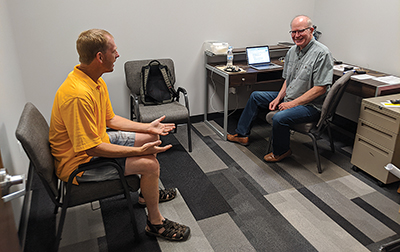 Lending for a new kind of church expansion
Lending for a new kind of church expansion
While the DNA of church lenders hasn’t changed in the 15 years Lewis has worked in this space, the lending landscape definitely has. Whereas large sanctuary build-outs (like the one Northridge did in 2008) were the norm for a time, those have largely been replaced with a satellite church model.
“It’s kind of like the Starbucks model: I won’t drive an hour, but I will drive 15 minutes,” Lewis explains. “At first, the satellite church model had us [as church lenders] scratching our heads because churches aren’t real estate investors.”
Now, he says, it makes a lot of sense.
“Churches adapt, and that’s what Northridge has done,” Lewis explains. “They maxed out their main campus, so they went to Webster and put in another.”
Lenders actually like retrofitting projects like Northridge’s because building from scratch takes longer and is more costly than taking the bones of a building and making it fit a church’s needs.
Additionally, Northridge Church was known as an excellent lending prospect, given its long track record of fiscal responsibility. “They’ve always been top-of-class and operate with absolute integrity,” Lewis says. “And Northridge is spot-on relative to its leadership structure.”
All things considered, the church received an expression-of-interest letter from Thrivent before Mapes and Bixby got other lenders to even sit down and talk with them.
“When we finally had to make our decision, I remember there were two particular lenders to whom I said, ‘Sorry, we already have a loan commitment. We’re going to move ahead with them,’” Mapes recalls. “They couldn’t believe it.”
“We work hard to meet churches’ specific needs and provide flexibility where we can,” notes Lewis. “We are unique in that we offer a variety of long-term fixed-rate options with an attractive reset feature that does not include a balloon payoff. Churches prefer not having to apply for financing over and over again.” Lewis further notes: “And we do not require a church to move its depository bank accounts, so as not to disrupt operations.”
Accommodating a moving-target project timeline
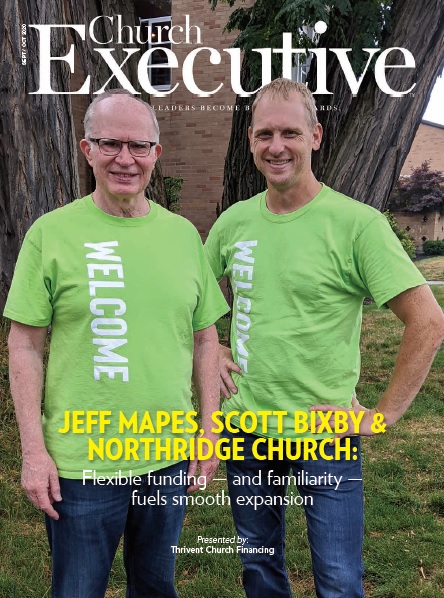
This embeddedness — not only with the church lending landscape, but also with how churches operate, and with Northridge itself, firsthand — is how the church was able to secure the funding it required for its hybrid project. First, the church needed to buy a building. Then, it needed to do renovation and construction. None of this is particularly unique among churches right now.
What was unique was the church’s uncertain project timeline.
Lenders typically seek to tie their construction draw period very tightly to a specific timeline — six months, 12 months, and so on. This is called a critical path timeline.
“For construction projects, a lender might say, ‘Let’s provide a 16-month window for the church to draw. And, during that time, it can make a draw request — usually monthly — over that course of time,” Lewis explains.
The Northridge Church project was different and included
some uncertainties.
“We were able to provide Northridge with some flexibility upfront so that if it didn’t start [the project] on the day it was planned, a delay wouldn’t necessarily throw off the funding,” Lewis explains. “It gives them the best of both worlds: a flexible timeline and enough room to accommodate delays.”
Mapes says he particularly appreciated having a single point of contact to accommodate the draw process.
“When we needed to pay our contractors , Thrivent was able to get the funds wired out expeditiously ,” he says, adding: “The contractor appreciated that, too.”
Share the vision
In the church world, we hear a lot about finding partners who “share your vision.” Case in point, it was important for Bixby and Mapes. But what does that mean, exactly, and how can it be ensured?
To answer those questions, it helps to understand how the typical church expansion project works — and its potential pitfalls on the financial side.
Often, a church first identifies the need to build and calls an architect. The architect puts together some mock-up plans. The congregation examines the plans and reaches out to a capital campaign firm to determine how much can be raised.
“The last person they’re calling is the lender,” Lewis points out. “And pretty often, the lender says, “Your project is too large. You can’t afford it.’”
Instead, determine the church’s financial capacity first before embarking on a project that you might not be able to build.
QUICK FACTS ABOUT
NORTHRIDGE CHURCH
Year established: 1889
Main campus: Rochester, NY
Number of locations: 4 campuses (2 permanent)
Number of staff: 40 (22 full-time / 18 part-time)
Combined weekly attendance: 2,200
2019 budget: $3.4 million
“We highly recommend involving a church lender early in the process,” Lewis advises.
It’s a familiar approach for Northridge.
“Because of our relationship, [Mapes] understands those limitations and can actually prepare for them,” Lewis says. “He might ask me, ‘If the church were to borrow, what would be the maximum we could borrow, based on our financials?’”
Ensuring a shared vision also requires seeking out a lender that has church expertise and shares the same values as the ministry. Ideally, this lender would celebrate with the church when it’s growing and, by the same token, help troubleshoot (developing an emergency or expense-reduction plan, for example) if things start moving in the wrong financial direction.
“It really is a different vibe when you start working with a church lender like Thrivent Church Financing versus a commercial bank,” Mapes confirms. “They’re aware of ministry. They’ve got the same goals and end game that we do.”
Making the most of an unprecedented challenge
Of course, even the best-laid financial plans can be waylaid by outside factors. That’s where Northridge Church recently found itself, when it opened its new building on August 9, 2020 amid the coronavirus outbreak.
Amazingly, nearly half of the church’s attendees were on hand for worship at that first service back. Bixby says there was a “tremendous vibe and a lot of excitement.”
In fact, the two men are trusting that God will use the pandemic as a significant light in spite of — and maybe even because of — COVID.
“We say that because, even in the anxiety and the uncertainty of this time, we’ve seen more than 200 people come to God in the last five months,” Mapes says. “I’d say most of them have never been inside our doors before; it’s all online. It’s all on TV.”
In the months and years ahead, both men expect that the new building will assure people that Northridge isn’t going anywhere. And maybe when the time comes, those people who’ve been checking out the church online or on TV will come worship in person.
Now, with a continuing sharp focus on “more and better,” the time will surely come for Northridge Church to expand further. When it does, Bixby and Mapes will have the experience, skills and relationships in place to navigate the process smoothly and confidently.



Hi,
I read your article and found it very informative. We are a local ministry and our edifice was built in 1998 and we desire NEW PEW OR CUSHIONS. Will you kindly recommend a local vendor please. Thank you.
Where can i get more info about the church lenders? thanks God Bless.